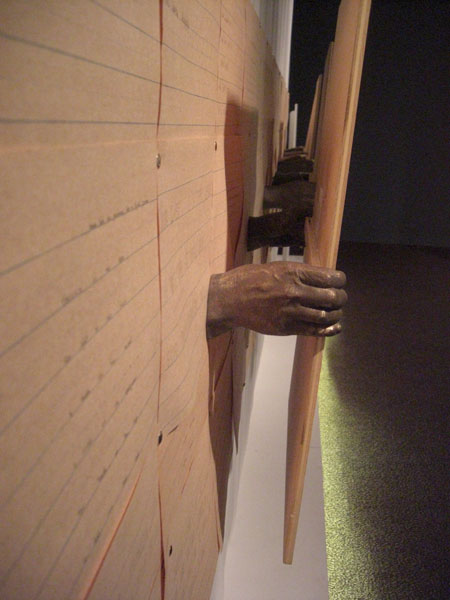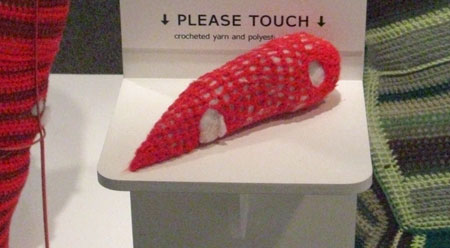
The museum guard with a gun said, “Put your camera away. No photographs in the exhibit.” That’s what I remember most about my first visit to the exhibit Revealing Culture, now at the Smithsonian Institute in Washington DC. VSA, the International Organization on Arts and Disability, sponsored the exhibit. The guard was just doing his job. I respect the many, dedicated bureaucrats who diligently do their jobs.
While I was dismayed that the Corcoran Gallery forbade non-commercial photographs of Maya Lin’s re-formations of natural landscapes, forbidding photographs at Revealing Culture is worse. VSA was founded “to provide arts and educational opportunities for people with disabilities and increase access to the arts for all.” What about persons who are bedridden and can’t physically come to the exhibit? What about those who don’t have money or time to travel to the exhibit?
Preventing art exhibit visitors from making non-commercial photographs signals an exhibit’s avariciousness for artifacts and contempt for art. Constraints are a natural feature of the real world. But reasonable accommodations are possible. Allowing visitors to make and share photographs of an exhibit costs the organizers neither time nor money. Sharing of non-commercial photographs through social networks can bring a sense of the exhibit to many persons who otherwise would have none. Sharing enhances true art. Art exhibits that prohibit non-commercial photographs seem to have an anti-social obsession with possession.
Change is possible.[*] Earlier this week, strolling about the area, I again entered Revealing Culture. A museum guard was there. Still unwillingly suspended in disbelief, I asked him if I could take photographs. He said, “Yes, in here you can.” Wonderful! An art exhibit that allows sharing culture!
My favorite work in Revealing Culture is Jon Berge’s Four/For Mona Lisa. On the wall facing the exhibit entrance, it resembles a band of shields that riot police use in charging a crowd. But in reality the shields are boards offering braille representations of inner-city children describing the Mona Lisa:
- Mona Lisa is a lady in a picture. Bright eyes, pretty smile. She has no family. She is outside in the sun.
- The Mona Lisa probably took a long time to draw so I bet she was very bored – and didn’t want to stay any longer. it only shows from the waist and up of her body. the Mona Lisa has on eyebrows on her
- She looked like she wanted to kill Leonardo for making her pose for a picture and she doesn’t dress like us. Leonardo must be her husband.
- Mona Lisa looks sad because she is alone. She is poor
Touching Four/For Mona Lisa activates a digital recording of the children reading their descriptions. Reality gives of itself to everyone who seeks it, to each in a way that relates to her or his capabilities. Jon Berge’s Four/For Mona Lisa is art of reality.

Revealing Culture is at the Smithsonian’s Ripley Center in Washington, DC, through August 29, 2010.
* * * * *
[*] A VSA publication, Arts Access Made Easy: Successful Strategies from the Award of Excellence in Arts Access, offers ten ways to achieve arts access. It seems oblivious to the rapidly developing capabilities of digital networks. Concern about access should include concern about being accessible through the Internet. Moreover, Arts Access Made Easy is oriented toward organizational-bureaucratic actions. Fostering grass-roots digital representations and peer-to-peer sharing across social networks can make a large contribution to improving access to a given body of work.